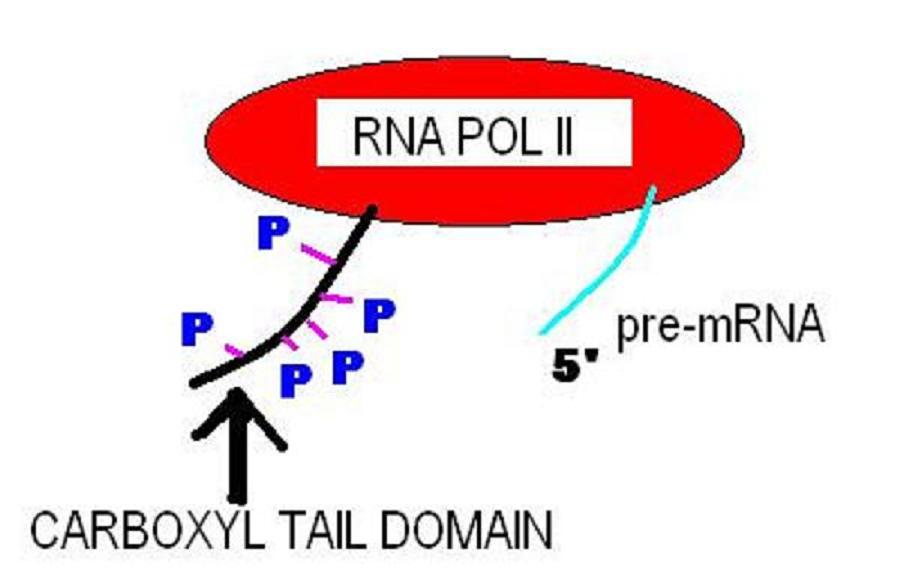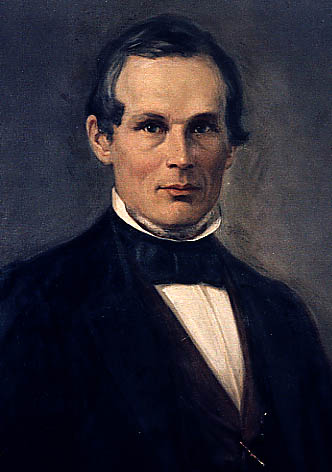|
MAOA
Monoamine oxidase A, also known as MAO-A, is an enzyme that in humans is encoded by the ''MAOA'' gene. This gene is one of two neighboring gene family members that encode mitochondrial enzymes which catalyze the oxidative deamination of amines, such as dopamine, norepinephrine, and serotonin. A mutation of this gene results in Brunner syndrome. This gene has also been associated with a variety of other psychiatric disorders, including antisocial behavior. Alternatively spliced transcript variants encoding multiple isoforms have been observed. Structures Gene Monoamine oxidase A, also known as MAO-A, is an enzyme that in humans is encoded by the ''MAOA'' gene. The promoter of ''MAOA'' contains conserved binding sites for Sp1, GATA2, and TBP. This gene is adjacent to a related gene ('' MAOB'') on the opposite strand of the X chromosome. In humans, there is a 30-base repeat sequence repeated several different numbers of times in the promoter region of MAO-A. There are ... [...More Info...] [...Related Items...] OR: [Wikipedia] [Google] [Baidu] |
MAOB
Monoamine oxidase B, also known as MAOB, is an enzyme that in humans is encoded by the ''MAOB'' gene. The protein encoded by this gene belongs to the flavin monoamine oxidase family. It is an enzyme located in the outer mitochondrial membrane. It catalyzes the oxidative deamination of biogenic and xenobiotic amines and plays an important role in the catabolism of neuroactive and vasoactive amines in the central nervous system and peripheral tissues (such as dopamine). This protein preferentially degrades benzylamine and phenethylamine. Similarly to monoamine oxidase A (MAOA), it also degrades dopamine hough some new research contradicts this, suggesting that MAOB does ''not'' directly degrade dopamine, but is responsible for GABA synthesis Structure Monoamine oxidase B has a hydrophobic bipartite elongated cavity that (for the "open" conformation) occupies a combined volume close to 700 Å3. hMAO-A has a single cavity that exhibits a rounder shape and is larger in volume than ... [...More Info...] [...Related Items...] OR: [Wikipedia] [Google] [Baidu] |
Brunner Syndrome
Brunner syndrome is a rare genetic disorder associated with a mutation in the MAOA gene. It is characterized by lower than average IQ (typically about 85), problematic impulsive behavior (such as pyromania, hypersexuality and violence), sleep disorders and mood swings. It was identified in fourteen males from one family in 1993. It has since been discovered in additional families. Signs and symptoms Causes Brunner syndrome is caused by a monoamine oxidase A (MAOA) deficiency, which leads to an excess of monoamines in the brain, such as serotonin, dopamine, and norepinephrine (noradrenaline). In both mice and humans, a mutation was located on the eighth exon of the MAO-A gene, which created a dysfunctional MAO-A gene. The regular function of MAO-A, breaking down monoamines, is disrupted, and monoamines build up within the brain. Mice that lacked a functional MAO-A gene displayed higher levels of aggression, in comparison to mice with a functional MAO-A gene. Diagnosis Upon susp ... [...More Info...] [...Related Items...] OR: [Wikipedia] [Google] [Baidu] |
Monoamine Oxidase
Monoamine oxidases (MAO) () are a family of enzymes that catalyze the oxidation of monoamines, employing oxygen to clip off their amine group. They are found bound to the outer membrane of mitochondria in most cell types of the body. The first such enzyme was discovered in 1928 by Mary Bernheim in the liver and was named tyramine oxidase. The MAOs belong to the protein family of flavin-containing amine oxidoreductases. MAOs are important in the breakdown of monoamines ingested in food, and also serve to inactivate monoamine neurotransmitters. Because of the latter, they are involved in a number of psychiatric and neurological diseases, some of which can be treated with monoamine oxidase inhibitors (MAOIs) which block the action of MAOs. Subtypes and tissue distribution In humans there are two types of MAO: MAO-A and MAO-B. * Both are found in neurons and astroglia. * Outside the central nervous system: ** MAO-A is also found in the liver, pulmonary vascular endot ... [...More Info...] [...Related Items...] OR: [Wikipedia] [Google] [Baidu] |
TATA Binding Protein
The TATA-binding protein (TBP) is a general transcription factor that binds specifically to a DNA sequence called the TATA box. This DNA sequence is found about 30 base pairs upstream of the transcription start site in some eukaryotic gene promoters. TBP gene family TBP is a member of a small gene family of TBP-related factors. The first TBP-related factor (TRF/TRF1) was identified in the fruit fly Drosophila, but appears to be fly or insect-specific. Subsequently TBPL1/TRF2 was found in the genomes of many metazoans, whereas vertebrate genomes encode a third vertebrate family member, TBPL2/TRF3. In specific cell types or on specific promoters TBP can be replaced by one of these TBP-related factors, some of which interact with the TATA box similarly to TBP. Role as transcription factor TBP is a subunit of the eukaryotic general transcription factor TFIID. TFIID is the first protein to bind to DNA during the formation of the transcription preinitiation complex of RN ... [...More Info...] [...Related Items...] OR: [Wikipedia] [Google] [Baidu] |
C-terminal
The C-terminus (also known as the carboxyl-terminus, carboxy-terminus, C-terminal tail, C-terminal end, or COOH-terminus) is the end of an amino acid chain (protein or polypeptide), terminated by a free carboxyl group (-COOH). When the protein is translated from messenger RNA, it is created from N-terminus to C-terminus. The convention for writing peptide sequences is to put the C-terminal end on the right and write the sequence from N- to C-terminus. Chemistry Each amino acid has a carboxyl group and an amine group. Amino acids link to one another to form a chain by a dehydration reaction which joins the amine group of one amino acid to the carboxyl group of the next. Thus polypeptide chains have an end with an unbound carboxyl group, the C-terminus, and an end with an unbound amine group, the N-terminus. Proteins are naturally synthesized starting from the N-terminus and ending at the C-terminus. Function C-terminal retention signals While the N-terminus of a protein often con ... [...More Info...] [...Related Items...] OR: [Wikipedia] [Google] [Baidu] |
Protein Dimer
In biochemistry, a protein dimer is a macromolecular complex formed by two protein monomers, or single proteins, which are usually non-covalently bound. Many macromolecules, such as proteins or nucleic acids, form dimers. The word ''dimer'' has roots meaning "two parts", ''di-'' + '' -mer''. A protein dimer is a type of protein quaternary structure. A protein homodimer is formed by two identical proteins. A protein heterodimer is formed by two different proteins. Most protein dimers in biochemistry are not connected by covalent bonds. An example of a non-covalent heterodimer is the enzyme reverse transcriptase, which is composed of two different amino acid chains. An exception is dimers that are linked by disulfide bridges such as the homodimeric protein NEMO. Some proteins contain specialized domains to ensure dimerization (dimerization domains) and specificity. The G protein-coupled cannabinoid receptors have the ability to form both homo- and heterodimers with sev ... [...More Info...] [...Related Items...] OR: [Wikipedia] [Google] [Baidu] |
Angstrom
The angstromEntry "angstrom" in the Oxford online dictionary. Retrieved on 2019-03-02 from https://en.oxforddictionaries.com/definition/angstrom.Entry "angstrom" in the Merriam-Webster online dictionary. Retrieved on 2019-03-02 from https://www.merriam-webster.com/dictionary/angstrom. (, ; , ) or ångström is a metric unit of length equal to m; that is, one ten-billionth ( US) of a metre, a hundred-millionth of a centimetre,Entry "angstrom" in the Oxford English Dictionary, 2nd edition (1986). Retrieved on 2021-11-22 from https://www.oed.com/oed2/00008552. 0.1 nanometre, or 100 picometres. Its symbol is Å, a letter of the Swedish alphabet. The unit is named after the Swedish physicist Anders Jonas Ångström (1814–1874). The angstrom is often used in the natural sciences and technology to express sizes of atoms, molecules, microscopic biological structures, and lengths of chemical bonds, arrangement of atoms in crystals,Arturas Vailionis (2015):Geometry of Crystals ... [...More Info...] [...Related Items...] OR: [Wikipedia] [Google] [Baidu] |
Flavin Adenine Dinucleotide
Flavin may refer to: Placename * Flavin, Aveyron, a commune in southern France Surname * Adrian Flavin (born 1979), a professional rugby player * Christopher Flavin, president of the Worldwatch Institute * Dan Flavin (1933–1996), a minimalist artist famous for using fluorescent light fixtures * Dan Flavin (politician), Louisiana politician * James Flavin (1906–1976), an American character actor * Jennifer Flavin (born 1968), a former model and wife of actor Sylvester Stallone * Martin Flavin (1883–1967), an American playwright and novelist * Martin Flavin (politician) (1841–1917), Irish Nationalist politician, Member of Parliament (MP) for Cork, 1891–1892 * Michael Joseph Flavin (1866-1944), Irish Nationalist politician, Member of Parliament (MP) for North Kerry, 1896-1918 * Mick Flavin Mick Flavin (born 3 August 1950) is an Irish country singer from Ballinamuck in County Longford. Flavin recorded his first album in Athlone in June 1986. His first big hit bei ... [...More Info...] [...Related Items...] OR: [Wikipedia] [Google] [Baidu] |
Amino Acid
Amino acids are organic compounds that contain both amino and carboxylic acid functional groups. Although hundreds of amino acids exist in nature, by far the most important are the alpha-amino acids, which comprise proteins. Only 22 alpha amino acids appear in the genetic code. Amino acids can be classified according to the locations of the core structural functional groups, as Alpha and beta carbon, alpha- , beta- , gamma- or delta- amino acids; other categories relate to Chemical polarity, polarity, ionization, and side chain group type (aliphatic, Open-chain compound, acyclic, aromatic, containing hydroxyl or sulfur, etc.). In the form of proteins, amino acid ''residues'' form the second-largest component ( water being the largest) of human muscles and other tissues. Beyond their role as residues in proteins, amino acids participate in a number of processes such as neurotransmitter transport and biosynthesis. It is thought that they played a key role in enabling li ... [...More Info...] [...Related Items...] OR: [Wikipedia] [Google] [Baidu] |
Monomeric
In chemistry, a monomer ( ; ''wikt:mono-, mono-'', "one" + ''wikt:-mer, -mer'', "part") is a molecule that can chemical reaction, react together with other monomer molecules to form a larger polymer chain or three-dimensional network in a process called polymerization. Classification Monomers can be classified in many ways. They can be subdivided into two broad classes, depending on the kind of the polymer that they form. Monomers that participate in condensation polymerization have a different stoichiometry than monomers that participate in addition polymerization: : Other classifications include: *natural vs synthetic monomers, e.g. glycine vs caprolactam, respectively *polar vs nonpolar monomers, e.g. vinyl acetate vs ethylene, respectively *cyclic vs linear, e.g. ethylene oxide vs ethylene glycol, respectively The polymerization of one kind of monomer gives a homopolymer. Many polymers are copolymers, meaning that they are derived from two different monomers. In the cas ... [...More Info...] [...Related Items...] OR: [Wikipedia] [Google] [Baidu] |
Epigenetic
In biology, epigenetics is the study of stable phenotypic changes (known as ''marks'') that do not involve alterations in the DNA sequence. The Greek prefix '' epi-'' ( "over, outside of, around") in ''epigenetics'' implies features that are "on top of" or "in addition to" the traditional genetic basis for inheritance. Epigenetics most often involves changes that affect the regulation of gene expression, but the term can also be used to describe any heritable phenotypic change. Such effects on cellular and physiological phenotypic traits may result from external or environmental factors, or be part of normal development. The term also refers to the mechanism of changes: functionally relevant alterations to the genome that do not involve mutation of the nucleotide sequence. Examples of mechanisms that produce such changes are DNA methylation and histone modification, each of which alters how genes are expressed without altering the underlying DNA sequence. Gene expressi ... [...More Info...] [...Related Items...] OR: [Wikipedia] [Google] [Baidu] |



